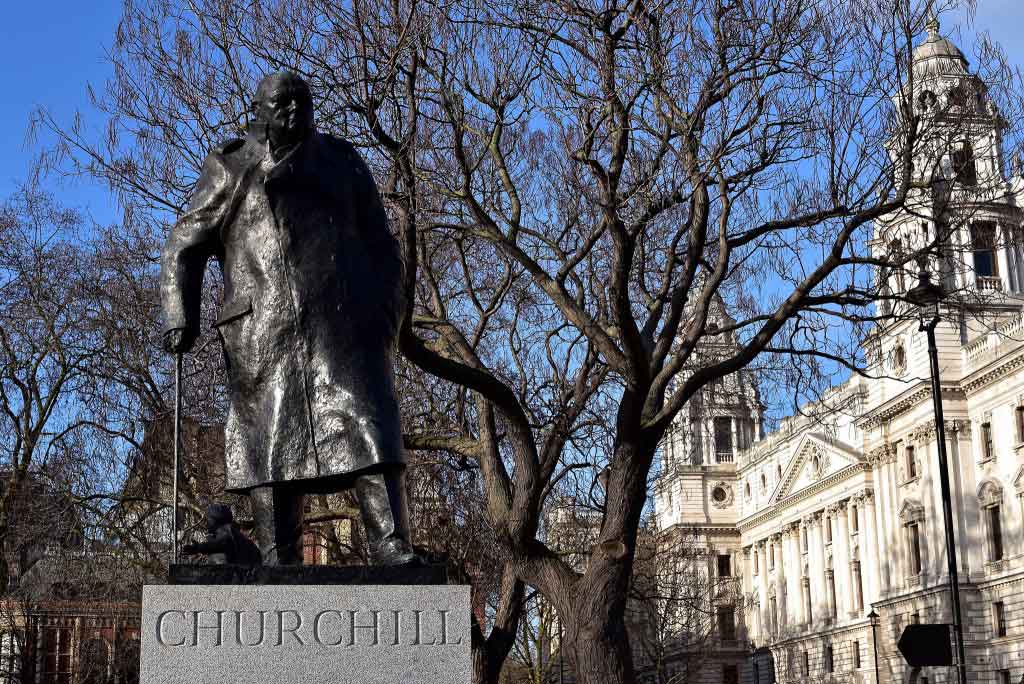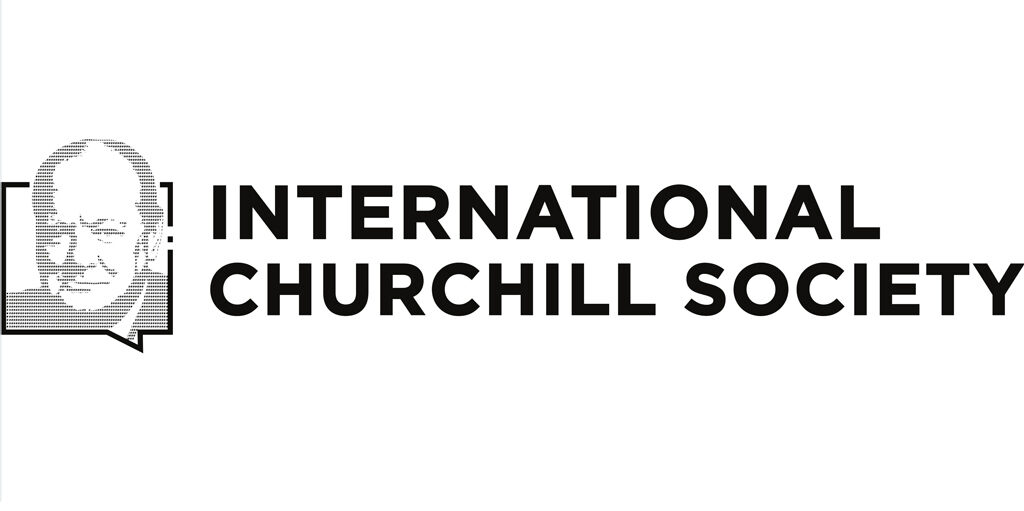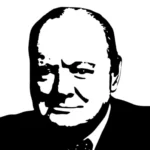
Finest Hour 141
Riddles, Mysteries, Enigmas

Winston Churchill, Parliament Square, London © Sue Lowry & Magellan PR
June 9, 2013
Finest Hour 141, Winter 2008-09
Page 12
Riddles, Mysteries, Enigmas
TR’s Great White Fleet

2025 International Churchill Conference
Q-I’m a filmmaker preparing for Swiss public television a documentary on the life of Swiss General Henri Guisan. On 17 September 1946, Winston Churchill together with his daughter Mary visited Castle Allmendingen, where a lunch or dinner party was held, and Churchill met with Henri Guisan. I would like to find out if photographs or even sound or film footage of that event might be found.
—FELICE ZENONI ([email protected]), ZURICH
A-We referred M. Zenoni to the Churchill Archives Centre and forwarded his note to Lady Soames. We found no reference in the literature to Allmendingen, and only one to General Henri Guisan, but it does explain why Churchill admired him. From Calvocoressi, Wint and Pritchard, Total War (New York Pantheon, 1989), page 271:
“On 30 August 1939 the Swiss parliament gave the cabinet emergency powers and on the same day General Henri Guisan was named commander-in-chief. The appointment was controversial and contested and Guisan had to be on his guard throughout the war against the intrigues of civilian and military personages who held that Switzerland’s only chance of escaping a German invasion lay in a scrupulous emphasis on the Swiss tradition of neutrality: they believed that Switzerland must aim above all at avoiding any provocation of Hitler. General Guisan…said that independence was even more important than neutrality, since without independence there would be no neutrality to protect; that the only threat to independence came from Germany; and that preparations must be made to meet this threat.”
SNUFF
Q-The House of Commons tour leaflet states: “Another curious survival of the 18th century is the provision of snuff [English Rose] in recent years at public expense, for Members and Officers of the House, at the door-keepers’ box at the entrance to the Chamber. Very few Members take snuff nowadays. Snuff, however, is the only form of tobacco to be tolerated in or around the Chamber: smoking has been banned there and in committees since 1693.” Do you have any idea about Churchill’s favourite brand of snuff?
—TIM, THE SNUFF STORE, KENT (ADMIN @SNUFFSTORE.CO.UK)
A-There are 33 references to snuff in our digital archive, although many refer to “snuff color” or “snuffing out,” or to colleagues who used snuff. Two references are to silver snuff boxes presented to WSC by the Duchess of Buccleuch and his friends at the Other Club. Here are the rest. We assume you can look up the publishers on www.bookfinder.com.
Sir John Kennedy, The Business of War, 105: “Churchill called continuously for more champagne, remarking it was very good stuff. He said he wanted to see the Germans out of Cyrenaica quickly— he had thought of giving up cigars till they were out, and then had decided to give up snuff instead. A few days later he said he had changed his mind, for he did not see why he should give up either snuff or cigars for any German.”
Henry Channon, Chips: The Diaries of Sir Henry Channon, 439: “28 September [1949]. Winston’s childish side is ever engaging. Today I saw him come into the Member’s Lobby which was crowded with representatives of the people who prefer chatter to Prayers, and as we waited for the doors to open and the attendant to shout ‘Prayers are over,’ Winston smilingly made his way towards one of the Porter’s chairs and asked for snuff, which the attendant handed him from a silver box.” Eden, Portrait of Churchill and Taylor, Informal Study of Greatness mention Churchill taking a pinch of snuff from the doorman of the House of Commons every time he entered. Sherwood, Roosevelt and Hopkins, quotes Harry Hopkins saying that WSC “took snuff from a little silver box—he liked it.”
An amusing reference from Jack Fishman’s My Darling Clementine: Clementine Churchill, campaigning for her ailing husband in Dundee, “bowed to the audience and smilingly took her seat on the platform. A fresh supply of snuff was released by someone and the platform party were amongst its first victims. Clementine was overwhelmed by an almost uncontrollable bout of sneezing. She rose to speak, and, finally mastering the urge to sneeze, said: ‘I’m glad to see that you are all alive and kicking in Dundee.’”
Bottom line: Churchill was a fairly regular user, but unlike cigars there is no documentation on the brand of snuff he preferred, unless it resides in a tobacconist’s bill at the Churchill Archives, to which we directed Tim.
STYLE AND RHETORIC
Q-Is there a good book on the origins of Churchill’s own style? Gibbon and Macaulay are often mentioned but I have have not found a serious analysis of his speeches in terms of rhetorical techniques. —ROBERT JOHNSON
You may like to consult the following, most of which should be available via the Churchill specialist booksellers or via www.bookfinder.com:
Manfred Weidhorn, Churchill’s Rhetoric and Political Discourse (Lanham, Maryland: University Press of America, 1987). Weidhorn is the dean of scholars on Churchill’s literary contributions: an erudite guide to Churchill’s use of language in his persuasive oratory.
Sir Norman Birkett, “Churchill the Orator,” in Charles Eade, editor, Churchill by His Contemporaries (London: Hutchinson, 1953; New York: Simon & Schuster, 1954; London: Reprint Society, 1955). This is a great work in its own right, packed as it is with first-person observations of Churchill in all his roles and moods.
Michael Wolff, Winston Churchill (Geneva: Editio-Service: 1970, distributed by Heron Books) 320 pp. “Great Nobel Prizes” series. An ably-written illustrated reference handbook by a onetime assistant to the official biographer. Part II considers Churchill as novelist, eyewitness, biographer, historian and orator (116 pp.). Hard to find but well worth owning a virtual “Churchill 101” guidebook.
Robert Rhodes James, “Churchill the Parliamentarian, Orator, and Statesman,” in Robert Blake and Wm. Roger Louis, eds., Churchill: A Major New Assessment of His Life in Peace and War. (Oxford and New York: Oxford University Press, 1993, paperback 1994); Churchill. Oxford: Clarendon, 1996, paperback. Rhodes James edited the Complete Speeches, a leading source on Churchill’s oratory.
CAMELS
Q-Finest Hour 137:7 presents the famous picture of Clementine, Winston, Gertrude Bell and T. E. Lawrence astride camels in front of the Pyramids, as well as WSC’s quote about having fallen off. Did this happen before or after the picture was taken? Also, I have read that he “slid off” as opposed to “fell off.” Which mode of dismounting did he use? I may be the champion of nit-picking, but I am just curious if there are answers to these questions.
HARRY BOSCH, SILVERDALE, WASH.
A-The date of the camel ride to the Pyramids was Sunday. 20 March 1921, during the Cairo conference. The fullest account is in W.H. Thompson, Sixty Minutes with Winston Churchill (London: Johnson, 1953, 11-12):
We were told that the journey would take about two-and-a-half hours. The camels were provided by the Egyptian Camel Corps and we were accompanied by a motley collection of Arab dignitaries on their splendid stallions. They made a colourful party.
Galloping on a camel is not my idea of pleasure. It resembles being turned round in a milk churn at fast speed. Nevertheless, gallop I had to—if I was going to keep up with Mr. Churchill. He entered into the spirit of the matter with boyish zest and everything proceeded satisfactorily if somewhat hectically, until the British statesman fell off his camel.
I was alarmed, for Mr. Churchill lay quite still on the ground, and was surrounded by the Arabs on their steeds shouting out all kinds of advice. It seemed to me that he was in imminent danger of being trampled to death by the horses. Winston was the least concerned person there. He soon got to his feet and, in spite of offers to give him a horse, insisted on remounting the camel.
Lawrence had difficulty in containing his laughter. He told Churchill: “It was only to be expected, you know, Winston. The old camel blew himself out when he heard that he was to have the honour of carrying such a great man, but when he saw the way that you ride he decided that he must have been misinformed. He deflated himself and the saddle girth slipped round, throwing you.”
When we reached Sakara, I had had enough of riding camels to last me the rest of my life. I looked forward to making the return journey by car.
Lawrence and Churchill had other ideas though. They were quite willing that the rest of the party should return by car, but decided that they would return as they came. Never did I regret more that where Churchill went, I had to go also. Wearily I dragged myself round to the camels and asked the Camel Corps sergeant to let me have the quietest and most docile beast there. He agreed, but, thinking himself something of a humorist, he gave me an animal that started off almost before I was in the saddle and raced its way back to the Pyramids without any guidance or consultation with me. How I kept on I do not know. Neither do I know how I should have stopped the camel if the security position had demanded it.
Winston Churchill made no comment at all upon my ride until I was getting back into his car—a painful experience. Then he leant forward and said: “Well done, Thompson. You’re sprightly today. I’ve not seen you jump about like this for a long time.”
The BBC video “Churchill’s Bodyguard,” vol. 2, “Lawrence and Walter Save the Day,” has some footage of the camel expedition with extracts from Thompson’s account of the incident. One does not see Churchill actually falling off the camel, but the explanation is that the girth slipped and Churchill “fell sideways to the ground.” He famously remounted saying, “I started on a camel; I want to finish on a camel.”
The photograph is on the cover of the DVD. Both Lawrence and Thompson are wearing a hat, shirt and tie as if in the City of London; Gertrude Bell looks over-dressed, while the only person correctly attired is WSC!
Camel behaviour helps explain what happened. In the 1911 Britannica, Sir F. Palgrave wrote that if
docile means stupid, well and good… But if the epithet is intended to designate an animal that takes an interest in its rider so far as a beast can, that in some way understands his intentions, or shares them in a subordinate fashion, that obeys from a sort of submissive or half-fellow-feeling with his master, like the horse or elephant, then I say that the camel is by no means docile—very much the contrary. He takes no heed of his rider, pays no attention whether he be on his back or not, walks straight on when once set agoing, merely because he is too stupid to turn aside, and then should some tempting thorn or green branch allure him out of the path, continues to walk on in the new direction simply because he is too dull to turn back into the right road. In a word, he is from first to last an undomesticated and savage animal rendered serviceable by stupidity alone, without much skill on his master’s part, or any cooperation on his own, save that of an extreme passiveness. Neither attachment nor even habit impresses him; never tame, though not wide-awake enough to be exactly wild.
Remember this the next time you are invited to mount a camel. —JRL
Having also ridden a camel eighteen years ago in the Outback on our 1991 Churchill Tour of Australia, I can confirm everything Sir F. Palgrave recorded, except that our well-fed camels did not deviate from the path when they spotted a succulent thorn bush. Staying aboard, assuming a tight cinch, is not hard, there being numerous hand-holds afforded by the saddle, and, if need be, by the camel himself. But it is not something one does elegantly. The person who looked best doing it was Charlotte Nicholson of Dallas, who had gone shopping at Nieman Marcus: “Give me an outfit to wear riding a camel,” she said, and they did. —RML
Subscribe
WANT MORE?
Get the Churchill Bulletin delivered to your inbox once a month.



